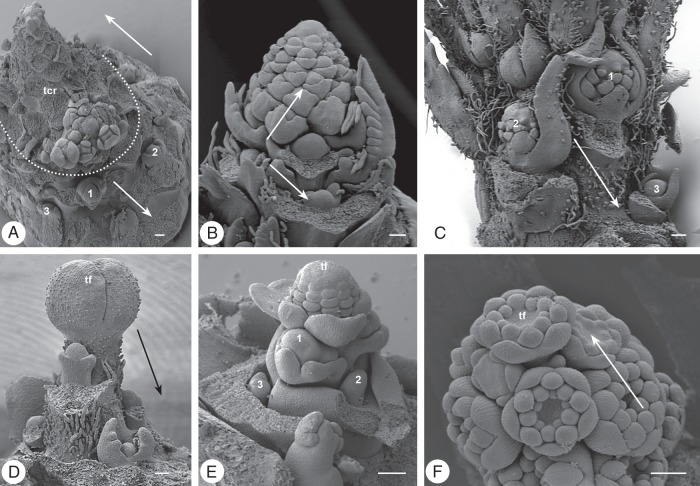Fig. 9.
Paraclades and inflorescences. (A–D) Paraclade formation: (A) Armoracia rusticana, Brassicaceae: terminal compound raceme (tcr, dotted line) and basipetally following raceme primordia (arrow: 1–3); (B) Sanguisorba minor, Rosaceae: terminal raceme (upwards arrow) and basipetally developing buds (downwards arrow) (C) Veronica longifolia, Plantaginaceae: axillary racemes (1–3) below the terminal one with decreasing size (arrow); (D) Meconopsis cambrica, Papaveraceae: terminal flower (tf) with basipetal paraclades (arrow). (E) Aquilegia vulgaris, Ranunculaceae: terminal flower (tf) and axillary flowers in basipetal developmental sequence (1–3). (F) Inflorescence development: Deutzia gracilis, Hydrangeaceae: botryoid with premature terminal flower (tf); arrows indicate acropetal development. Scale bars = 100 µm.

